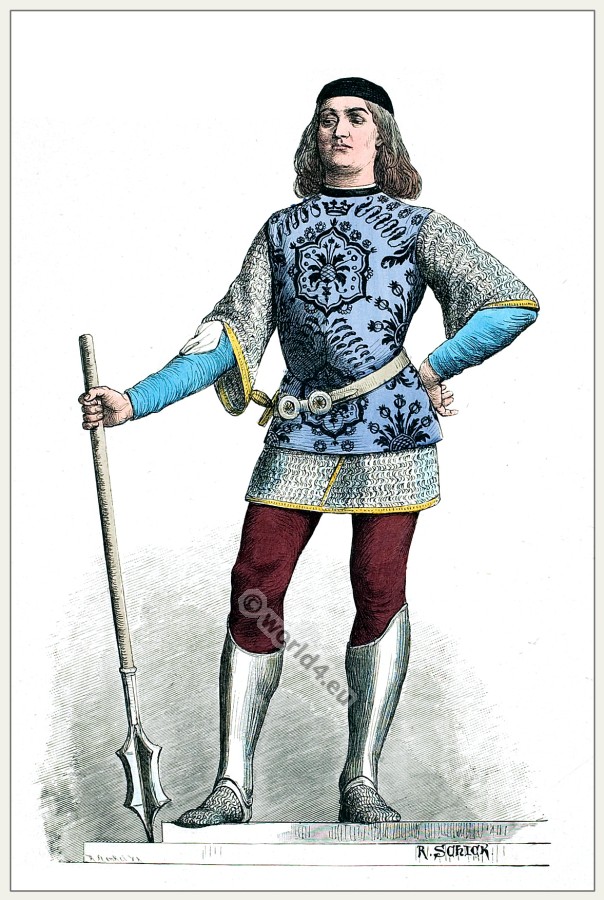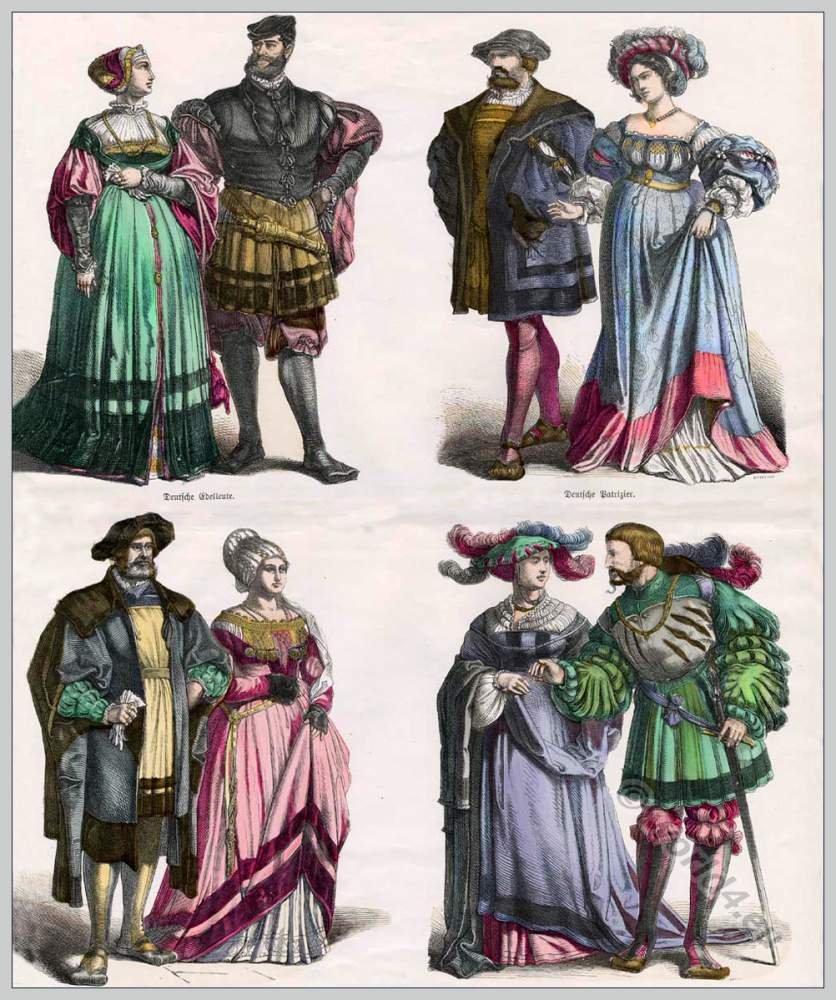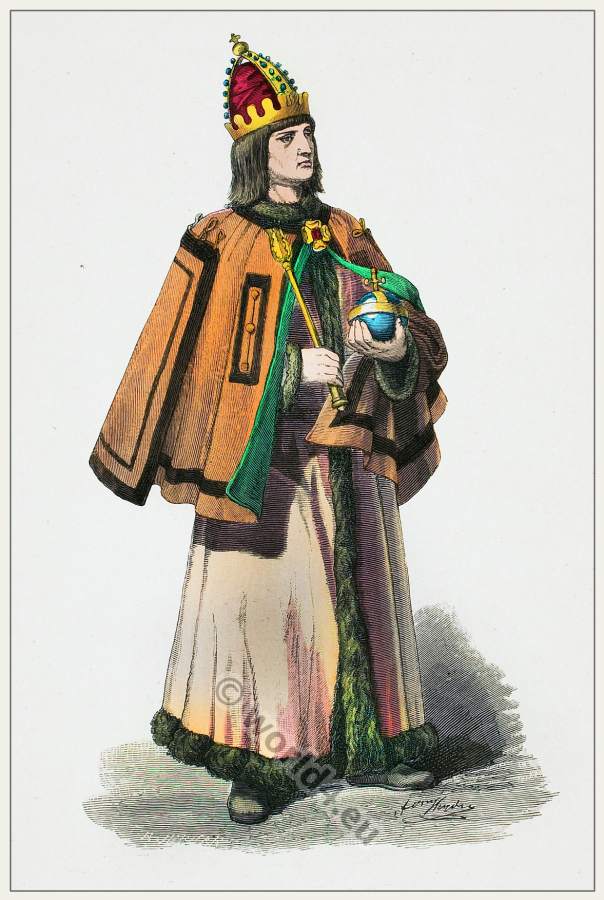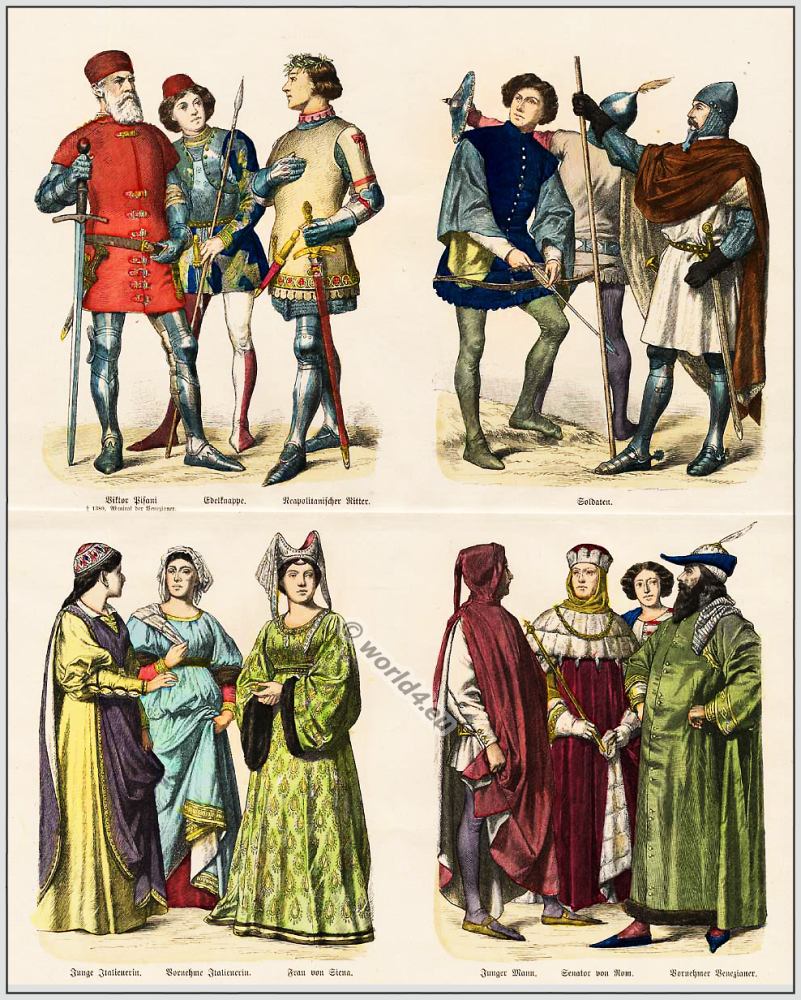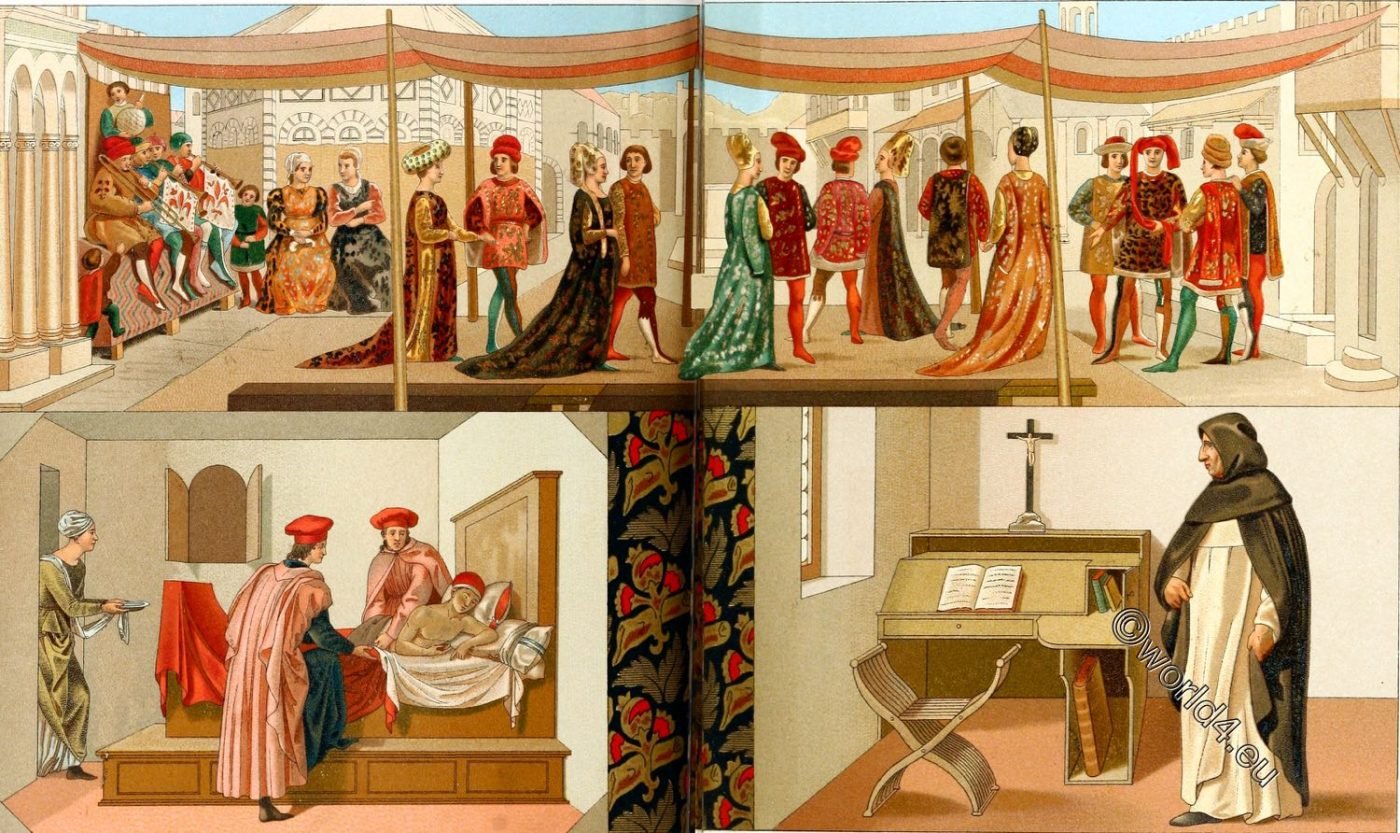
3
2 1 4
ITALY XV. CENTURY. BOURGEOIS AND ECCLESIASTICAL COSTUMES – FURNITURE
(DOUBLE SHEET).
No.1. Black velvet fabric interwoven with gold and red atlas. After a painting by Gentile da Fabriano at the Academy of Florence. (First half of the XV century.)
No. 2. St Cosmus and Domitian are visiting the sick. After the predella of an altarpiece by Francesco Pesello in the Louvre.
No. 3 Marriage of Boccaccio degli Adimari with Lisa Ricasoli, celebrated in Florence in 1420. After the painting of an Anonymus in the Guarrazzi Gallery (Galleria dell’Accademia, Firenze). The portal from which the wedding procession emerged is that of the Bigallo, which was inhabited by the Adimari and still exists today. The musicians sitting on an esplanade carry on their wind instruments the old coat of arms of the Florentine Republic (red lilies with flowers on a silver field). In the background on the left you can see the baptistery.
The newlywed wears a black velvet dress with gold embroidery and a pointed bonnet, while the groom’s head is bared. The bonnet of the young woman, which ends in two horns, is of French origin, just like the Liripipe (also chaperon, gugel, sendelbinde from sendal, light silk), which hangs down from the bulging cap of the man who makes an inviting hand movement on the right side of the picture.
No. 4 Interior of the cell of the Dominican friar Savonarola and his portrait after Fra Bartolomeo. The cell has been preserved as it was at his death in 1498. The chair is old, the prayer stool has been restored from the ruins of the old one. The crucifix is the same one he wore when he went to the stake. The painting is currently in the convent of San Marco in Florence, whose prior was Savonarola.
Source: History of the costume in chronological development by Albert Charles Auguste Racinet. Edited by Adolf Rosenberg. Berlin 1888.

